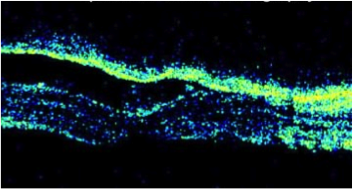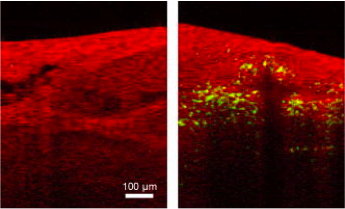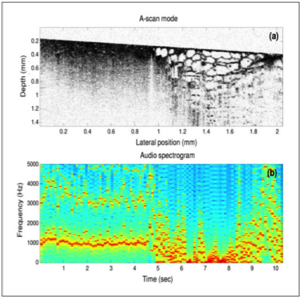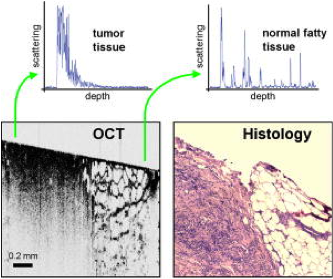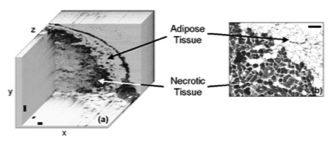Breast Cancer |
||||
|---|---|---|---|---|
Ultrasound-guided optical coherence tomography (OCT) appears to be an effective means for differentiating early-stage breast cancers from benign lesions, and, as such, it has the potential to reduce the number of breast biopsies women undergo for suspicious lesions. Laser implications: Insight’s fast measurement speed reduces movement blurring and supports high-definition 3D imaging. Long coherence length allows more flexibility in imager distance. The clean optical signal provides more detail, higher contrast and less feature blur. Additional general information: Additional technical information: |
The dark area is indicative of a breast tumor.
New OCT methods are improving |
|||
|
Audiospectagram of breast tissue to help
|
OCT indicating repetitive markers
|
|||
|
One of the first OCT images to show |
Correlation with OCT images |
|||


